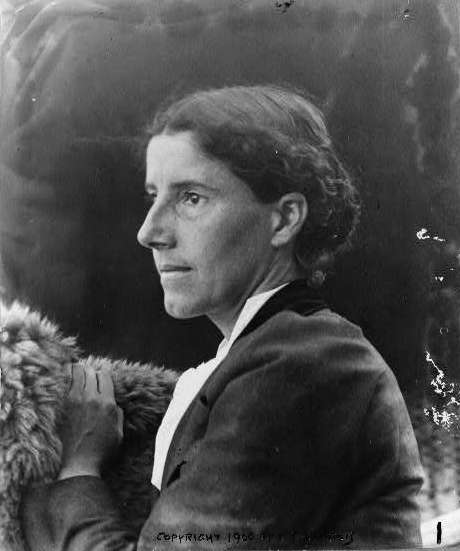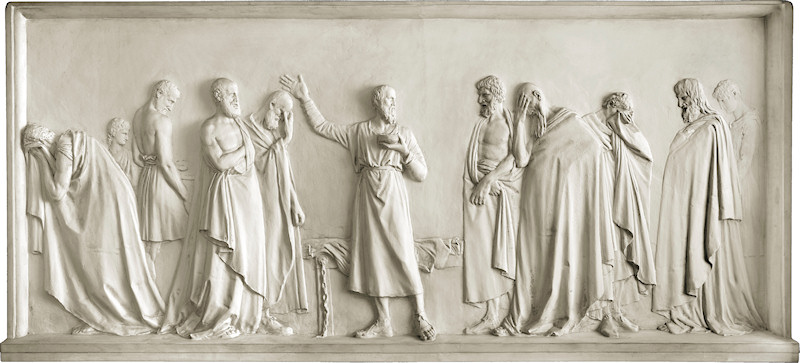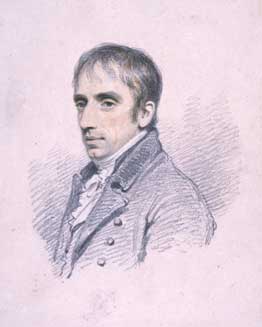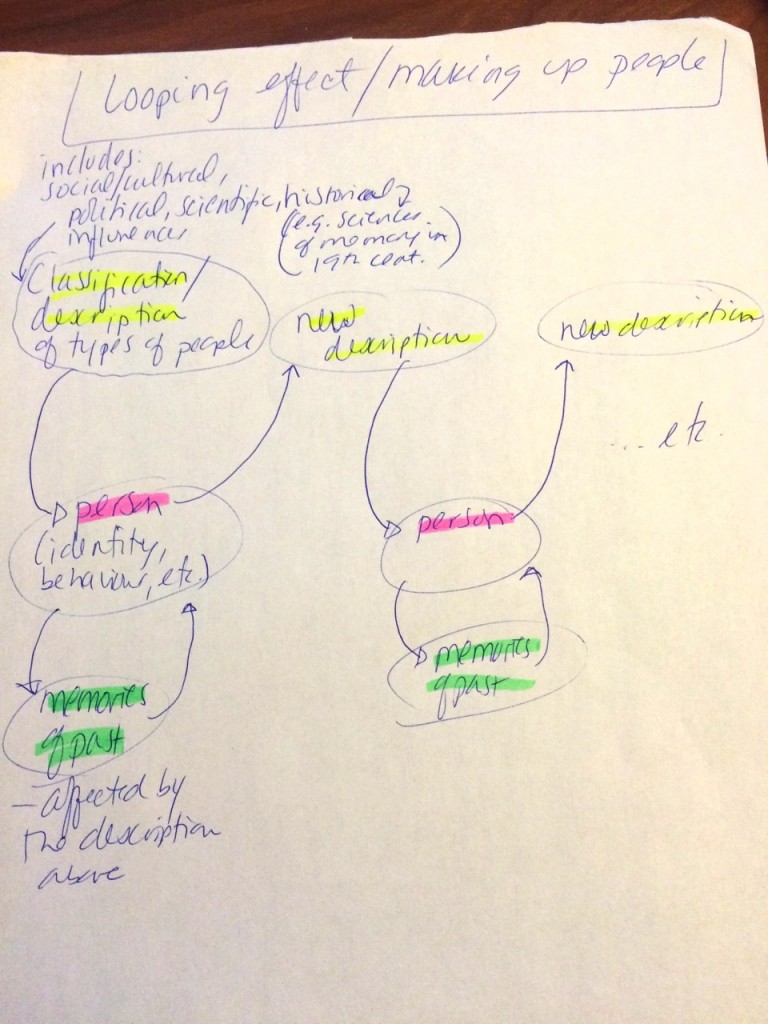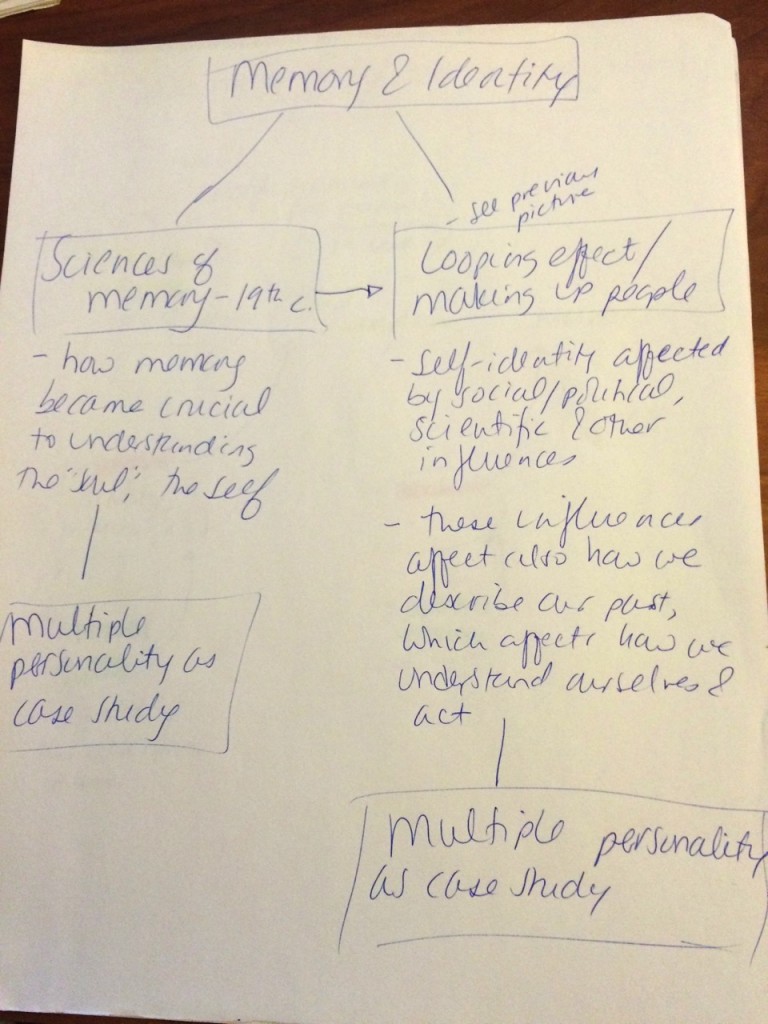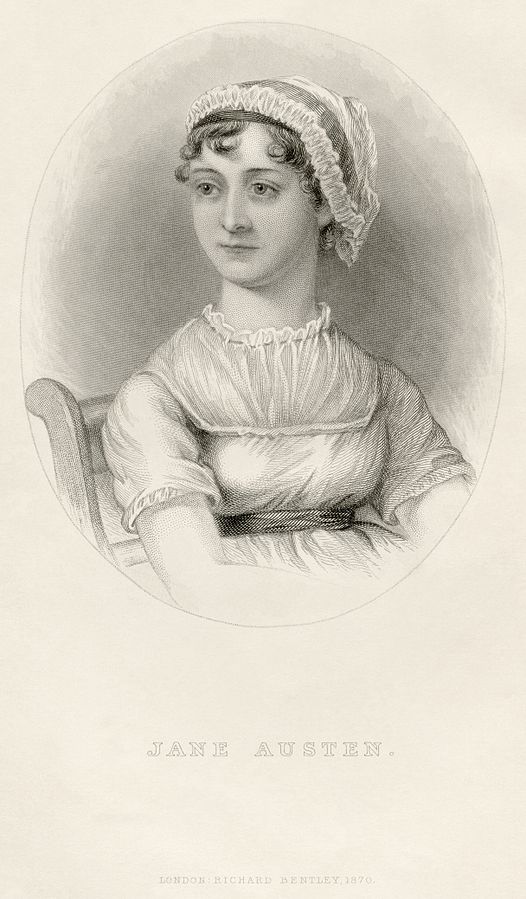
From A Memoir of Jane Austen, by her nephew JE Austen-Leigh, published 1869-1870. Downloaded from Wikimedia Commons, public domain.
I am unfortunately not feeling well enough to be in class today for Arts One, though I can lie down and type on the computer so I’m putting some thoughts on this week’s book and film on my blog.
First up: Jane Austen’s Northanger Abbey.
Northanger Abbey and gothic novels
The narrator
I was really struck by how the book begins: the first couple of pages are all about what Catherine is not like–she is not a heroine in the traditional sense of a gothic novel. So our first impressions of her as the main character are often negations: she is not this, not that, etc.
Then, many of the narrator’s interruptions into the flow of the story do something similar: they talk about how this story does not fit what one might expect. Here are just a few examples.
- One might expect that Mrs. Morland, on Catherine’s departure, would warn her about “the violence of .. . noblemen and baronets,” but she knew little of these (9).
- There wasn’t “the refined susceptibilities, the tender emotions which the first separation of a heroine from her family ought always to excite” (9).
- The brief account of the Thorpe family is all you’re going to get; not what you might expect to take up the next 3-4 chapters (21).
- When Catherine sees Henry at the theatre and thinks he is upset with her, she did not have the right kind of heroic feelings, but rather “natural” ones (66).
- The narrator emphasizes the difference between how Catherine is returning home and how heroines usually return home (172).
After thinking about this for awhile, along with the fact that the narrator comes in so often and pulls the reader out of the flow of the story, reminding the reader that this is, after all, a fictional story, I came to the following thoughts (which I’m happy to have disputed!).
Narrative intrusions like the ones noted above bring up the genre of gothic literature, making you think about it, while also distancing you from it so you can look at it critically. They not only signal that this book is not typical of a gothic novel, but also that it’s going to be a book about gothic novels. Further, they signal that this is a book about people reading gothic novels, and what it does to them. We get this in the first few pages as well, when the narrator tells us that Catherine had been in training for a heroine from ages 15-17 (7) and then of course when Catherine and Isabella shut themselves up together to read such novels (23).
What is the book saying about gothic novels?
We talked in class on Wednesday about how it looks to be suggesting that they make young women too suggestible–given what they do to Catherine. But remember from lecture that Prof. Burgess emphasized how Catherine comes to the realization that she has voluntarily allowed herself to be influenced too strongly: “… it had all been a voluntary, self-created delusion, each trifling circumstance receiving importance from an imagination resolved on alarm, and every thing forced to bend to one purpose by a mind which, before she entered the Abbey, had been craving to be frightened” (146). Prof. Burgess suggested that maybe Catherine is misusing the novels in some way, not being critical about them (remember the last point in lecture: the book and the film both argue that we should be critical consumers of media).
Taken together, all this suggests to me that maybe the problem is not the existence of gothic novels so much as our reading habits. Remember also from lecture that Henry and Eleanor read and enjoy gothic novels, and they aren’t portrayed as the most negative characters in the text (while John Thorpe, who is portrayed negatively, says he never reads novels (32)). And one thing the narrator’s intrusions into the story do is to keep us from being too engrossed in the story, reminding us it is a fiction, a book, and this can encourage critical reflection on the story itself (whereas otherwise we might just get caught up in the narrative.
But there is something else too. There is the fact that Catherine was right about General Tilney: he really is a villain, even if not the kind she thought he was. This made me think that perhaps the book is suggesting that there are plenty of awful, evil things in the real world to pay attention to, to give us enough sense of fright, that we don’t need to get lost in fictional stories of horror. Or at least, in addition to those, also think about the nastiness that is going on right around us. There are numerous examples of everyday evil in the text:
- Women are fairly powerless in the social situation at the time:
- As Henry says about dancing and marriage (and perhaps numerous other things): “man has the advantage of choice, woman only the power of refusal” (54).
- Eleanor points out that her power in the house is really nothing; she just has to do what the General says (166).
- Social customs and the economic structure did require that one had to pay attention to money in marriage (though not as much as Isabella and John Thorpe and General Tilney did–Catherine’s family was not rich, but not destitute either).
- People did act in manipulative ways: e.g., Isabella and John manipulating Catherine into going with them on a carriage ride when she had already told Eleanor she’d go on a walk with the Tilney’s (70-72)
- The General’s behaviour toward Catherine in kicking her out of the house, of course.
Perhaps again this is a matter of saying read gothic novels critically; don’t just think that those kinds of evils will happen around you, but be aware of the kinds that already do.
Catherine Morland’s character
I really wanted to spend some time in class today discussing Catherine as a character. I won’t spend too much time on that here, as I also want to get to a few things about the film and my blog post is already going to be very long!
Opinions can legitimately differ on how we are to take Catherine as a character, but I take her quite positively. Maybe that’s based on what I already think as a person in the 21st century: I don’t mind that she is quite naive, I focus instead on the fact that she is more concerned with morality and practicality than with social customs. She is really quite naive about the ways of the social world at the time, as evidenced by the things she doesn’t “get”:
- She doesn’t understand what Isabella is doing with Cpt. Tilney at first (107)
- She doesn’t get the General’s suggestion of marriage on p. 128
- She doesn’t get that when the General says some things he really doesn’t mean them (151, 155-156)
- and more…
It’s possible to read Catherine as a silly, naive girl who is too gullible to be reading gothic novels b/c she will just be too easily influenced. And I don’t think such a reading must necessarily be wrong, it’s just that I also see a different possibility too. I grasp onto the places where she expresses a concern for morality or practicality:
- She won’t say a lie in order to go with Isabella, John and James on a ride, even though they all press her to do so and doing so would make her relationships with Isabella and James easier (70-73)
- She wonders how, if people say one thing and mean another, they can be understood. How can people have good relationships while doing this? (156)
- Her family were instead “plan matter-of-fact people” who “were not in the habit … of telling lies to increase their importance, or of asserting at one moment what they would contradict the next” (46).
- She expresses to Henry that she doesn’t like his brother, Cpt. Tilney, for what he has done with Isabella–even though someone else might be concerned that it could jeopardize her relationship with Henry if she expressed dislike for one of his family (161).
- To which Henry replies, I think with some irony, that her mind is “warped by an innate principle of general integrity, and therefore not accessibly to the cool reasonings of family partiality, or a desire of revenge”–or else she would not be at all concerned for Isabella’s feelings but only for her brother’s (161).
I rather like Catherine, then, and think of her character as someone who is far enough outside the social customs and manners of the society in which she finds herself for most of the novel to be able to look at them critically and react to them honestly. It really is incomprehensible how people can be understood if they say one thing or mean another; it really is incomprehensible what Isabella could have been doing with Cpt. Tilney when she is engaged to James, etc.
I also wanted to talk today about whether and how Catherine changes over the course of the novel, but I’ll leave that to you to think about, in the interest of saving some time and space to talk about the film.
Shaun of the Dead
Zombies and everyday life
One thing this film does very well is to make the zombie attack look, at least at first, just like a normal day. The clip shown in lecture is a good example, where Shaun walks to the store to get a drink and a Cornetto for Ed, walking past several zombies in the process and not noticing anything at all because he is groggy from just waking up. And, as someone pointed out in lecture, that is a repeat of an earlier scene where he walks to the same store and meets the same people (more or less) before they are zombies. Things have changed a bit, but not in enough of a way to mark a great distinction between everyday life and people being zombies.
But there are lots of good examples of this elsewhere in the film:
- The very first thing we see in the film is Shaun’s face like a zombie in the pub; Ed is playing video games; they’re talking about how they just do the same things over and over and need to get out and do something else.
- The next day is full of zombie references:
- When he wakes up and walks out of his room he has that zombie walk and the zombie sound when yawning.
- On public transit, everyone looks like a zombie.
- There are news reports in the newspaper at the store, and on the televisions at his work, about something strange starting to happen; but he keeps getting pulled away from those into everyday life…it’s no different than a usual day with strange things happening in the world.
- Also on the tv’s at work there are similar (or exactly the same?) shows as we get at the end as well: the game show with people slipping on slides, the talk show with Trisha…. At the end these have zombies, but really that’s not terribly different from these shows at the beginning without zombies.
- Shaun and Ed can’t tell a zombie from a drunk when they leave the pub and incorporate the zombie’s groans into their song.
- etc., etc., etc.!
So really, we’re already zombies; the zombie apocalypse in the film is just a more obvious expression of what’s already going on.
Zombies and video games, media, pop culture
The film also does a great job of linking media, music, video games and zombies.
Throughout the film Ed is playing video games: in the very first scene, at the pub, then at home, then he turns on the video game machine at the Winchester when they’re trying to be quiet so the zombies don’t find them, and then of course in the very last scene. He was always a zombie, really; things haven’t changed that much with him.
There was a scene early on in the movie, I can’t remember exactly when, when Ed is playing a video game where you shoot people and Shaun is helping him by pointing out someone Ed had missed, at the “top left” or something like that. And that happens again in reverse when they’re shooting zombies at the pub later: Shaun is shooting and Ed points out one that Shaun had missed, again “top left” (I think it was top left, but whatever…you get the idea). There is an association here between the zombies and video games as well.
Also when they’re in the Winchester trying to hide from the zombies, what brings them to the zombies’ notice? The video game and the jukebox with music, of course (Queen’s “Don’t stop me now”…not sure if there is some kind of symbolism to that song but I’m not seeing it at the moment; it does, of course, allow for a funny line when Shaun tells David to turn off the jukebox by saying “Kill the Queen”).
One thing that particularly struck me in this regard is when the newscaster said, and repeated, that the way to stop the zombies was to “Remove the head or destroy the brain.” Pretty clearly that is what has already happened to many people, possibly in part as a result of video games, pop culture, various media: we’ve lost the ability to think for ourselves, to think critically, and just go along with the crowd instead. And the fact that Shaun and friends could go through the zombie horde without them noticing by just looking and sounding like a zombie is significant: the zombies just want you to become like them. As long as they think you already are, they’ll leave you alone. The point of zombieism is conformity.
Questions
Now, given all of what we’ve talked about on Wednesday and what I’ve said above and what you yourself think, what connections can you draw between the film and the novel?
I think it would also be interesting to consider whether both Catherine and Shaun change by the end of the book and the film. I can see how Catherine might, but does Shaun? Have things really changed in the film by the end? It seems the zombies are still around (just now more directly on the tv shows rather than indirectly), and Shaun and Ed are still playing video games.
Please put your thoughts on these, or anything else I’ve said (and please feel free to disagree…I like it when I get a chance to think critically about what I already think!), in the comments.
